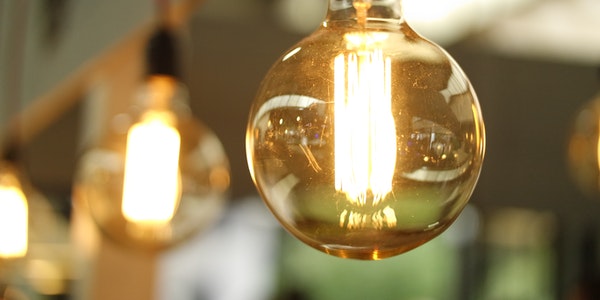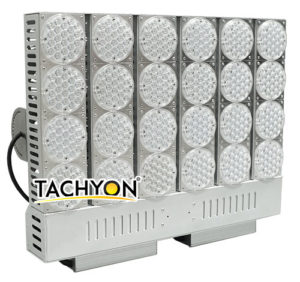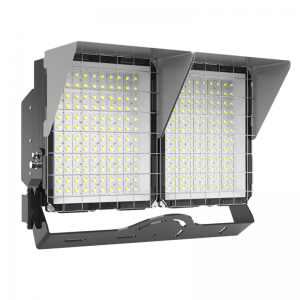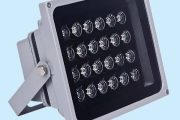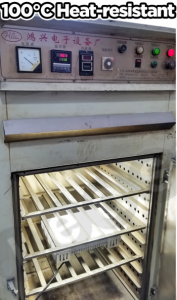What is high temperature LED
From pulp and paper mills, foundries to steel mills, many industrial environments are places with high heat and high temperature. And, although most lights will falter in this harsh environment, high-temperature LEDs have emerged in the face of this harshest environment.
Including lamps ranging from LED floodlights to high bay lights and low bay lights, there are multiple options for each application. High temperature LED lights are designed to work in high temperature environments up to 212°F (100°C). Moreover, LED lighting is more energy efficient than metal halide bulbs (another popular choice in high-temperature lighting) and has a longer life span, which means less time spent replacing bulbs. In addition, unlike other types of lighting, LEDs can be turned on and off immediately without requiring immediate preheating. Therefore, in addition to being efficient and effective, LED high temperature lamps are also very lasting.
High temperature LED lighting application
Want to know what constitutes a “high temperature” environment? In fact, any environment whose temperature continuously exceeds 100 degrees can be classified as a high temperature environment, but some industrial facilities are almost always of this kind. In these places, severe temperature fluctuations occur, so industrial lighting solutions with extremely high operating temperatures are required.
Foundries
Power Plants
Hot Mills
Blast Furnaces
Steel Manufacturing
Chemical Plants
All these facilities are subject to extreme temperatures that demand special lighting, and this is exactly the purpose of these high-temperature LED lights. With all the characteristics, you will experience the durability of high-temperature lamps and all the benefits of LED lighting .
Do we need to consider temperature?
When considering whether a fixture is appropriate, the first question to ask is: Can it work outdside?
Most of the cases, the answer is yes. Therefore, if you live anywhere in the United States, you can rest assured that since the average temperature is completely within this range. Broadly speaking, our lighting equipment can work in a temperature range of -40 to 248 F°. the LED lights can work in an outdoor environment.
LEDs may still be affected by certain temperatures, which may affect their performance despite the good news. Anyhow, thermal stress will still be generated on your products `cause your city may record lower than freezing temperatures at night and high temperatures during the day .
So, how are LED lights really affected by cool or hot temperatures, and should you avoid certain temperatures?
How does the LED perform at high temperatures
LED had a shoebox-style housing when they were first introduced to the market, and could overheat very quickly due to lack of heat dissipation. In order to prevent this from occurring, manufacturers have begun to install fans in LED lamps, but this will only cause mechanical falses.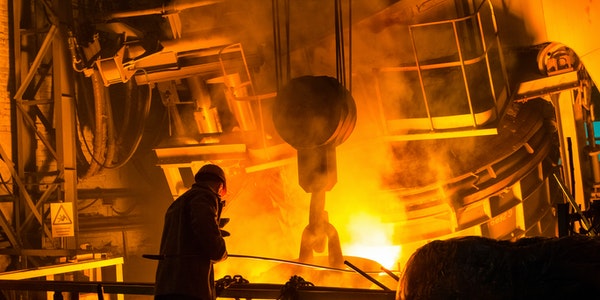
The new generation of LEDs can prevent heat-related lumen depreciation because they have heat sink. They will channel the excess heat and keep them away from drivers and the LEDs. Some LED lights include a compensation circuit which performs quite well sepecially at different ambient temperatures that adjusts the current flowing through the LED to ensure continuous light emission.
However, like most electronic devices, LEDs tend to perform poorly when operating at higher temperatures than expected. In a long-term high temperature environment, the LED may overwork, which may shorten its life expectancy (L70). This causes the lumen output of the LED lamp to drop sharply at a faster rate than at lower temperatures. A higher ambient temperature will result in a higher junction temperature, which will increase the degradation rate of the LED junction components.
However, ratio at which LED life begins to decrease significantly is not common due to ambient temperature. As long as you know that your lighting fixtures will be exposed to high temperatures for a long time, is it necessary to study how it affects your lighting choices.
How does the LED perform at low temperatures
Because LED lights mainly rely on driving power to work, LED lights perform well at low temperatures, which is its most significant advantage.
The fact is that LEDs actually flourish at low temperatures.
Since LEDs are semiconductor light sources, they emit light when current flows through them, so they are not affected by the temperature of the cold environment and can be turned on immediately.
In addition, because the thermal stress (temperature change) imposed on the diode and driver is small, LEDs work best at low temperatures. In fact, researches have shown that when the LED is installed in a cold environment, its degradation rate will decrease and the lumen output will increase.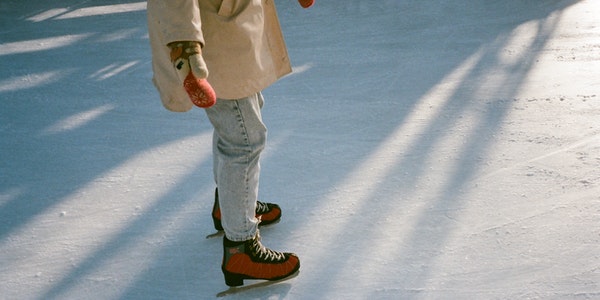
Comparison with other types of lighting
Compared with other types of lighting products, LEDs are usually the least affected by the increase and decrease of ambient temperature, or the least impact, and have the widest operating temperature range. The reason is simple. LEDs rely on driving power to work, while other lighting products rely on outdated technology and inadvertently massive excess heat is generated.
The following is a brief overview of the working principles of other lighting products and their relationship with the weaknesses of working at lower temperatures or higher :
Composite fluorescent lamp
The tube of the CFL contains a small amount of xenon gas and mercury vapor. When current passes through the lamp tube, the lamp generates invisible ultraviolet light, which excites the fluorescent coating (phosphor) inside the lamp tube, and then visible light is produced. The initial temperature of the compact fluorescent lamp needs to be between 14°F and 104°F to start its reaction process. When the temperature is lower than this temperature (14°F), the CFL light may not start
Incandescent lamp
There is a tungsten wire in the glass shell of the incandescent bulb. When current passes through the filament of the bulb, the current heats the filament to a certain temperature, which makes it glow. If it is installed in a cold environment, incandescent lamps will generate too much heat (up to 70%), and the efficiency is very low. It takes longer for the bulb to heat up and glow.
High-pressure gas discharge lamp
High-pressure gas discharge lamps generate light by passing an arc through a gaseous combination of vaporized mercury and metal halide. With the dropping of temperature, the vaporized gas in the arc tube of the high-intensity discharge lamp decreases, which will cause the open circuit voltage required to start the arc tube to increase until it reaches the point where the bulb cannot be generated.
In general, when choosing lighting for your outdoor environment, LEDs provide the best choice. If only the operating temperature is taken into account, ideally, LED fixtures can work normally.
The LED lights will work as expected, regardless of whether the lights are installed at high or low temperatures. Only at extremely high temperatures can lighting equipment be affected, and precautions should be taken to minimize the life expectancy.
How is your outdoor lighting setting? Ever noticed the effects of cold or heat? Drop a message in the comment field below and we`ll get back to you.

